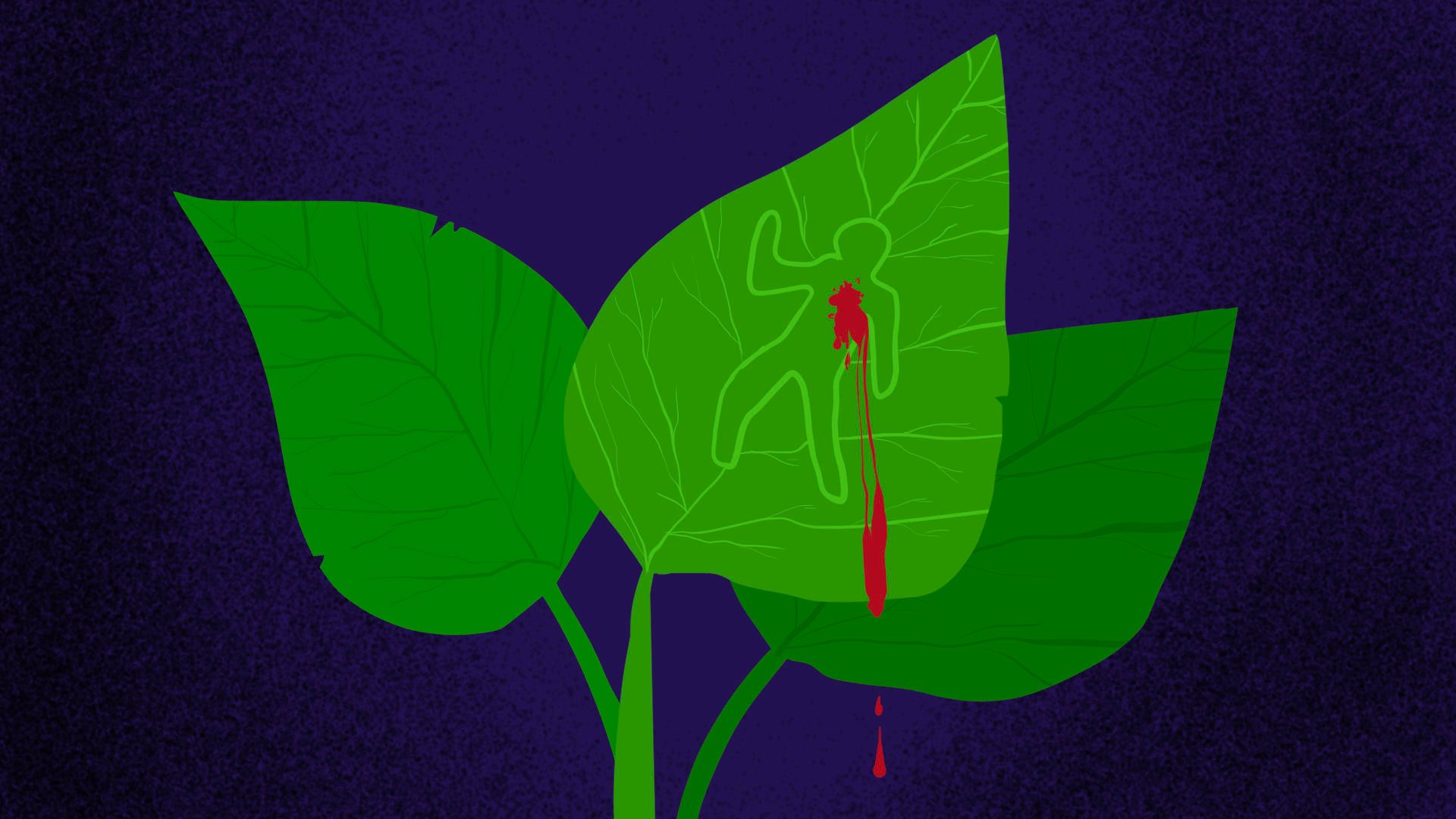SUMMARY
This is AI generated summarization, which may have errors. For context, always refer to the full article.

MANILA, Philippines – Dangerous levels of pollution in a nearby open coal storage facility in the area was causing asthma in children and several other people in one community.
This is what prompted Gloria Capitan to start a petition in 2014 against the continued operation of the facility. It attracted adherents and advocates who joined the Coal-Free Bataan Movement alongside Gloria which became instrumental in the campaign against polluting businesses operating in her home province.
Gloria became an environmental defender because she wanted to protect her grandchildren, Jeremy and Ana (not their real names)*, and the people in her barangay from the pollution caused by the coal storage facility.
“[Siya ay isang] maalagang ina, maalaga sa kanyang mga anak, apo, kapatid, sa kanyang mga kabarangay. Medyo maganda ang kanyang hangarin dito sa amin,” Marco (not his real name)*, Gloria’s son, told Rappler. (She cared deeply for her children, grandchildren, and the people in the barangay. She had good intentions for us all.)
As her campaign spread, Gloria started receiving both threats and bribes that appeared to have one objective: to stop and silence her.
Worst fears
Gloria’s son Marco was preparing dinner one afternoon with his family after visiting an organization in a neighboring barangay.
Gloria didn’t join them at the time and instead proceeded to her store, where they were making curtain dividers used as makeshift doors.
Suddenly Marco heard a successive bang! bang! bang!
Marco and his family froze as three gunshots echoed in their family’s compound, followed by screams. He initially dismissed the morbid thought that the target of the shooting could have been his mother. Very quickly, Marco and his brother headed in the direction of the gunshots.
To their horror, Marco’s worst fears turned out to be true.
They found Gloria shot multiple times – in front of her grandchildren, Jeremy, and Ana. They were 7 and 9 years old at the time.
In shock, panic, and desperation, Marco and his brother tried to chase after the gunmen but failed to catch them.
Marco returned to their compound and decided to take Gloria to a hospital, where she succumbed.
Days after Gloria’s death, Jeremy and Ana, who were very fond of her, asked Marco and his family for their grandmother.
“Araw-araw siya hinahanap ng mga apo. Nagtatanong sila, ‘Bakit pinatay si Nanay?‘” Marco narrated. (Her grandchildren asked for her every day. They would ask, “Why did they kill Grandma?”)
Gloria Capitan was the first environmental defender killed under the administration of former president Rodrigo Duterte, according to Rappler data. At least 218 more died in the six years he was in office, from 2016 to 2022.
Duterte’s term may have ended already, but with the recent killings and the abduction of environmental activists, one thing is certain: environmental defenders in the Philippines remain in danger up to this day.
Hot spots for killings
Gloria may be the first environmental defender killed under Duterte, but killings had already been recorded even in the past two decades. Rappler data show that before Gloria, 115 had already been killed from April 2001 to April 2016.
Over the past two decades, most of these killings happened in the regions of Davao, Western Visayas, and Mimaropa, according to Rappler data and records from the Kalikasan People’s Network for the Environment (Kalikasan PNE). The killings started in 2001 and continued until 2022.
As of 2022, a total of 334 environmental defenders have been killed. For nine consecutive years since 2012, according to international organization Global Witness, the Philippines has been the deadliest spot in Asia for environmental defenders.
Of the 334 killings involving environmental defenders, 61 were traced to the Davao Region, while 40 happened in Western Visayas. Of all the recorded killings, more than a third came from the following five provinces: Davao de Oro, Negros Occidental, Bukidnon, Negros Oriental, and Palawan (see map below).
Many of the environmental defenders who were killed protested against the operation of businesses that pollute or destroy the environment in their communities, while some pushed for the protection of landscapes such as forests.
There were also defenders who served in the government, like forest rangers and municipal and community environmental officers, who were killed while on duty. But most of them were just trying to protect their homes.
Issues fought
Of the recorded killings nationwide, 165 were due to mining-related issues, while 106 were related to agriculture. Mining, agriculture, and logging issues are linked to most of the deaths in the five provinces that registered the highest number of killings.
There were also cases where the killings were linked to several issues. For instance, there were cases involving land grabbing in areas being turned into a logging or a mining site. The data included all the issues involved which were counted separately.
In the provinces of Bukidnon and Davao del Norte, mining and agriculture issues were the reasons for most environmental killings that were recorded.
In Palawan, forest rangers who guarded areas from illegal logging activities were also targeted. In Negros, they were mostly related to agriculture and land grabbing-related issues. In 2019, police operations and counterinsurgency programs used brutal force against landless agri-workers, resulting in the deaths of 29.
Kalikasan PNE national coordinator Jon Bonifacio and Karapatan secretary-general Cristina Palabay told Rappler that the attacks in the island of Negros are "linked to Duterte-era policies" – Oplan Sauron, Presidential Proclamation No. 374, Presidential Memorandum Order No. 32, and Executive Order No. 70 – that "set up the island of Negros for continued military operations."
Palabay told Rappler that President Ferdinand Marcos Jr. – now on his second year in office – has to "rescind the following policies that greenlighted these killings" to stop them from recurring in the future:
- Oplan Sauron is a joint operation of the Armed Forces of the Philippines and the Philippine National Police against suspected communist rebels, criminals, and those involved in illegal drugs.
- Through Memorandum Order No. 32, Duterte ordered more troops to be deployed in Bicol, Samar, and the island of Negros to "suppress lawless violence and acts of terror."
- Executive Order No. 70 created the National Task Force to End Local Communist Armed Conflict or the NTF-ELCAC, while Duterte declared the Communist Party of the Philippines-New People's Army a terrorist organization through Presidential Proclamation No. 374.
"While ostensibly declared to wipe out communist insurgents on the island, civilians have frequently – if not primarily – been the focus of military operations with the extent of harassment, threats, trumped-up charges, and killings that have taken place," Bonifacio said.
Multiple killings in some families
There have been cases where multiple individuals related to each other were killed at the same time and place. Out of 334 recorded environmental defender killings over the past two decades, 56 were killed among groups of people who shared the same surnames.
Some of these individuals were related to each other, belonging to the same family, such as the case of three members of the Danyan family in South Cotabato. According to the Environmental Justice Atlas, Datu Victor Danyan and his sons Victor Jr. and Artemio were killed on December 3, 2017.
In Abra, three members of the Ligiw family were killed on March 2, 2014. According to SunStar and Bulatlat reports, Freddie Ligiw, a member of the progressive youth group Anakbayan in Abra, was killed along with his father Licuben and brother Eddie.
In SunStar's report, Kalipunan ng mga Katutubong Mamamayan ng Pilipinas spokesperson Piya Macliing Malayao was quoted as saying the Ligiw family had "gained the ire of the military because of their political affiliations" and involvement in several campaigns in the province, among them the anti-mining plunder campaign.
Three members of the Capion family in South Cotabato were also killed at the same time. Juvy Capion and her sons, Pop and John, were killed on October 17, 2012. At the time of the killing, Pop was only 13 years old, while John was only 8, according to a Davao Today report.
Human rights group Karapatan-Socsksargen said in the report that the killing involved an attack by Philippine Army troops against Lumad who were "opposed to the operation of foreign and large-scale mining SMI-Xtrata in their ancestral land."
Lawyers also killed
Five lawyers who fought for environmental causes were also killed over the past two decades, based on the combined data of Rappler and Kalikasan PNE.
One of these advocates was Gil Gujol of Karapatan-Bicol, shot in the head on December 12, 2006, in Gubat, Sorsogon. According to a Philstar.com report, Gujol was shot on his way home after a court hearing. He was a vocal legal counsel in land and mining cases in the region.
Another lawyer, Mia Manuelita Cumba Mascariñas-Green, was the target of four assailants who ruthlessly opened fire at her while driving a van near her home in Tagbilaran City, Bohol, on February 15, 2017. A regional police spokesperson said then that Mascariñas-Green was a "known environmental lawyer." Authorities said the lawyer's children and their nanny was also in the van when the shooting happened. Fortunately, her children were spared.
A year later, on November 6, 2018, Benjamin Ramos was shot dead by gunmen in Kabankalan City, Negros Occidental. Ramos was secretary-general of the National Union of Peoples' Lawyers (NUPL)-Negros Island. He also represented a number of political prisoners, including the Mabinay 6, who were arrested in Mabinay, Negros Oriental, following an alleged clash with government troopers.
In Guihulngan, Negros Oriental, Anthony Trinidad was silenced by riding-in-tandem gunmen on July 23, 2019, after a court hearing. He was notable for his commitment against land grabbing and for representing political prisoners.
More recently, Juan Macababbad, chairman of the Socsksargen chapter of the Union of People's Lawyers in Mindanao, was shot dead outside his house in Surallah town, South Cotabato, on September 15, 2021. Macababbad had been receiving death threats after being sued with a strategic lawsuit against public participation in 2015, after local movements barricaded the aerial spraying facilities of a banana plantation. He also opposed applications for coal mining in the Daguma Mountain Range.
Both Ramos and Trinidad were red-tagged as communist rebels before the incidents happened, while Macababbad is a member of the red-tagged NUPL.
Killings continue under Marcos
Just a few months after Marcos became president in June 2022, four environmental defenders were already killed: one in Negros Oriental, another in Zamboanga del Sur, and two in Negros Occidental.
According to an ABS-CBN News report, copra farmer Crisanto Estrabella Lagardilla was killed in a firefight with government troops in Sitio Tamusi, Barangay Talalak, Santa Catalina, Negros Oriental on July 30, 2022.
In Dumingag town, Zamboanga del Sur, municipal environment officer Richard "Butch" Cabilan was shot several times by at least three gunmen at the municipal agricultural training center of the town on November 3, 2022. Cabilan died on the spot.
National Democratic Front (NDF) consultant Ericson Acosta and peasant organizer Joseph Jimenez were killed on November 30, 2022, in a clash between the military and NDF Negros in Kabankalan City, Negros Occidental. However, human rights group Karapatan Negros called the reported clash "a fake encounter."
Protection needed now
Bonifacio, Palabay, and Environmental Defenders Congress (EDC) spokesperson Jean Lindo told Rappler that Marcos should acknowledge these killings – and besides rescinding the harmful "Duterte-era policies" – also sign the human rights defenders protection bill, or House Bill No. 77, into law to protect environmental defenders. The bill has been pending with the House committee on human rights since July 26, 2022.
Marcos, Bonifacio pointed out, has been "alarmingly silent" on the issue of the killings.
"We must acknowledge that environmental defenders are guardians of our ecosystems, not enemies of the state," Lindo said.
"There should be zero tolerance of extrajudicial killings, including that of environmental defenders. Justice should not just be soundbites. Real justice, now!" declared Palabay. – with reports from Jamaica Columbres/Rappler.com
Marco, Jeremy, and Ana are aliases to protect their identity and safety.
Add a comment
How does this make you feel?





![[ANALYSIS] Danger signs in an oligarchy: Political violence and intrigue](https://www.rappler.com/tachyon/2023/08/oligarchy-duterte-marcos-july-30-2023.jpg?resize=257%2C257&crop_strategy=attention)



There are no comments yet. Add your comment to start the conversation.